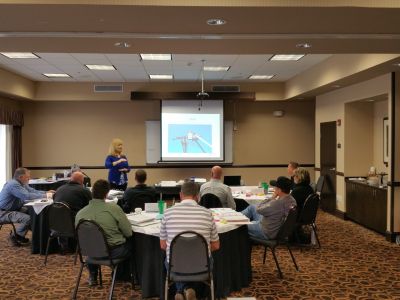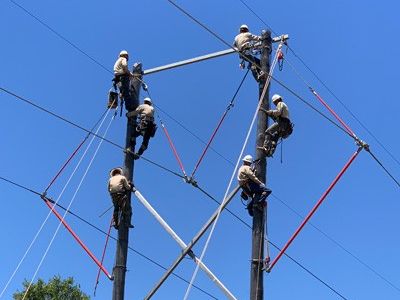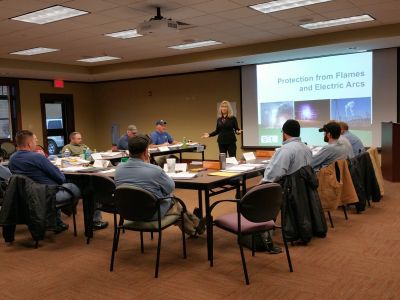OSHA Electric Power Standards
Enclosed and Confined Spaces
What’s the difference? The terms “enclosed” and “confined” seem like synonyms. When most of us think of something that is enclosed, we think of it as being confined, and when we think of a confined place, we think of it being somewhat enclosed. How we visualize these two words often accounts for why we have […]
Protection from Flames and Electric Arcs
It is important to remember that all arc hazards are not equal. According to OSHA, electric power generation, transmission and distribution workers face a significant risk of injury from burns due to electric arcs. Studies have concluded that a large percentage of arc-related incidents resulted in either a fatality or in extremely painful third-degree burns, […]
De-energizing Lines and Equipment for the Protection of Employees
It’s critical for workers to understand the process of de-energizing lines and equipment to hold them clear. As with all articles in this series, it is important to start with the hazard. Electrical hazards are present when electrical systems are assumed to be de-energized but are not. It is important to remember that transmission and […]
Information Transfer: What’s Needed to Protect Affected Workers?
As with all the other articles in this series, when it comes to information transfer, it is important to start with the hazard. Individuals who work on or near electric power lines and equipment face a multitude of potential high-risk electrical hazards. Employers have the responsibility to identify and control known hazards to ensure worker […]
Minimum Approach Distances: What’s Required?
Let’s kick off this article with a definition of what “MAD” means in the utility sector – and it does not mean that we’re upset with you. The word is actually an acronym that stands for minimum approach distance, which is the calculated safe working distance that provides worker protection when working on or in […]

Why are Job Briefings and Risk Assessments Important?
When you hear the term “job briefing,” what comes to mind? Perhaps a meeting, a form to fill out or maybe even a complete waste of time? How we perceive job briefings has a huge impact on how we complete them. Per OSHA, job briefings are required to be completed before each job; however, for […]

What are OSHA’s Training Requirements?
In our first article in this series (see https://setsolutionsllc.com/when-osha-electric-power-safety-standards-apply/), we discussed how to apply OSHA’s electric power standards. This article will review OSHA 29 CFR 1910.269 and 1926 Subpart V training requirements relating to qualified and unqualified employees. To determine training requirements, you must first ask the question, are my employees exposed to electric power system […]

When OSHA Electric Power Safety Standards Apply
When OSHA Electric Power Safety Standards Apply Welcome to the first part of what will be a six-part series focused on OSHA’s electric power standards. We will start this series with a discussion about when the standards apply. Future articles will cover what is in the standards plus provide you with some practical ways to […]